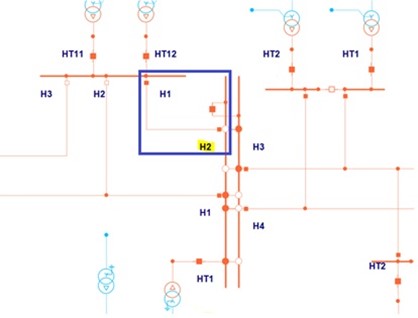The power generated in renewable plants is evacuated via transmission lines that must be protected against any electrical fault that may originate in the system. Traditionally, protection schemes based on Directional Overcurrent (50/51 with 67), Distance (21) or Differential (87) have been used.
Among them, the differential protection is the most effective method. This protection is based on the fact that the current entering at one end must be equal to the current leaving at the other end. This system requires a communication link between the relays of each of the terminals of the line to be protected. This link will be used to send the current values (magnitude and phase) and to command the operation of the circuit breakers in case of detecting differences in the measured currents.
This communication channel must meet a set of technical requirements that allow the correct operation of the differential protections. In order to simplify and minimize these requirements, distance protections with zone acceleration schemes can be used.

Substation single-line diagram
Distance protection scheme with teleprotection
Two distance protection relays are configured at both ends of the line, with the same phase and neutral distance protection settings (21/21N), enabling the quadrilateral characteristic for phase-to-phase distance faults and the mho characteristic for phase-to-ground faults, with four protection zones. And, as a complement to these functions, three teleprotection schemes are enabled:
- Zone acceleration (also called 85-21 or 85A): sends a pulse through the teleprotection equipment to the remote end in case of remote protection tripping. If both ends see a fault, the trip is accelerated to make it instantaneous.
- Directional comparison (85-67N or 85C): works in conjunction with the directional ground fault (67N). When one of the two protections detects an earth fault in the direction of the line, it sends a pulse to the other position. If the other position also sees a fault, tripping occurs instantaneously.
- Direct Transferred Trip (85D or DTT): works in conjunction with the breaker failure function (50B). When a breaker fault occurs at the position, a direct trip is sent to the positions feeding the fault, including the remote end.
As a general rule, this protection scheme is more economical than the classic solution based on differential protection, which involves the use of fiber optic cards dedicated to differential communication.
Conclusión
Distance protections complemented with teleprotection schemes can be used for the protection of power evacuation lines in renewable power plants. These schemes imply lower technical communication requirements since they only send tripping signals, without neither current magnitudes nor phases. That is, any channel based on fiber optics, carrier wave or radio link may be used.
Javier Jiménez Reviejo (Testing and Commissioning Engineer)
Rubén Saavedra Quintana (Testing and Commissioning Engineer)
Alexis Martínez del Sol (Substation Automation Systems Business Manager)
For more info: https://www.arteche.com/en/substation-automation-systems
Contact arteche





